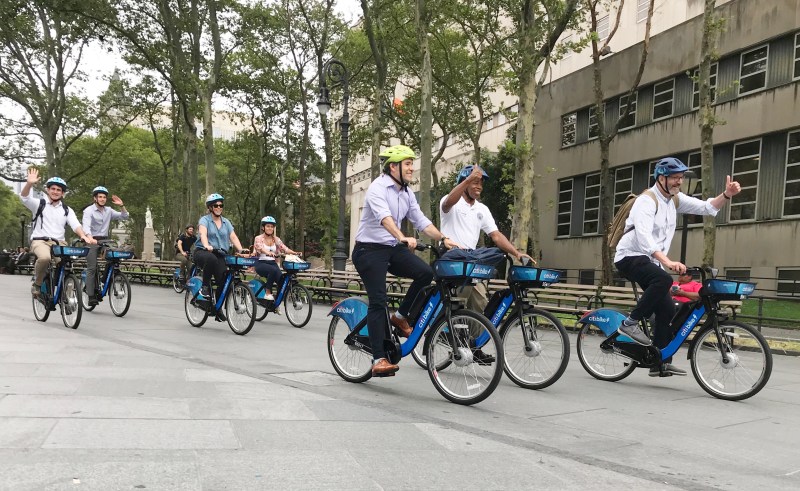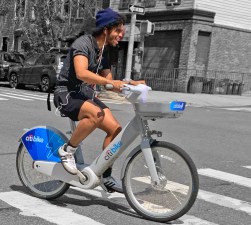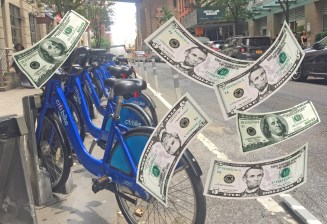Cycling in the City: Citi Bike on the Rise; Bridge Crossings Falling
Meanwhile, the number of people biking over the East River bridges saw its most precipitous decline yet.

Here’s one possible reason your Citi Bike station is constantly out of bikes: people are riding them.
Citi Bike’s daily ridership increased by 7.8 percent last year, according to DOT’s just-released “Cycling in the City” report [PDF] — an increase that came even though Citi Bike did not expand its coverage footprint and the system experienced a two-month repair crisis that reduced the fleet almost in half.
The chart below shows that Citi Bike ridership was up in almost every month last year:

The positive Citi Bike numbers match other growth, according to the DOT report. The number of people biking across 50th Street — a sample street in the DOT study — increased by 8.2 percent. Cycling across 86th Street was up 10 percent.
Such increases come as census data finally shows increases in the number of daily bike commuters. The feds had said the bike-to-work movement was largely stagnant between 2015 and 2016, but it jumped by 6.5 percent in 2017, the last statistical year available.
But some cycling hills may be too steep to climb.
The DOT report said that number of daily bike trips over the four East River bridges dropped 6 percent last year, continuing a downward trend that began in 2017 after years of positive momentum. Bridge-crossings were down on all four East River bridges, with notoriously cycling-unfriendly Brooklyn Bridge dropping the least, oddly.
https://twitter.com/BrooklynSpoke/status/1127997352239714305
Bike New York Communications Director Jon Orcutt, a former city DOT official, pointed to two possible reasons for the discrepancy between the growth of Citi Bike and the drop in East River bridge crossings. As the waterfront communities of North Brooklyn and western Queens get older and wealthier, for example, the bike commuting demographic has moved further and further from Manhattan.
Additionally, last year was the city’s fourth rainiest year on record, which Orcutt suggested may have discouraged people from taking their bike in and out of Manhattan.
“Commuting into Manhattan is more of an all-day commitment that people may not make if the weather looks or is forecast to be bad,” he told Streetsblog.
Citi Bike trips, on the other hand, are a “moment-to-moment” decision and typically shorter, making them a better bet in bad weather.
For Citi Bike, the numbers are likely to continue rising. In November, Lyft announced that it would triple the number of Citi Bikes and double the size of the network over the next five years. The company says it will soon reveal the first set of expansion neighborhoods.


